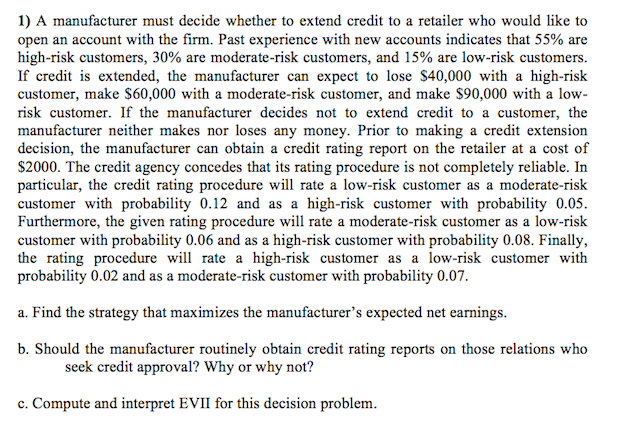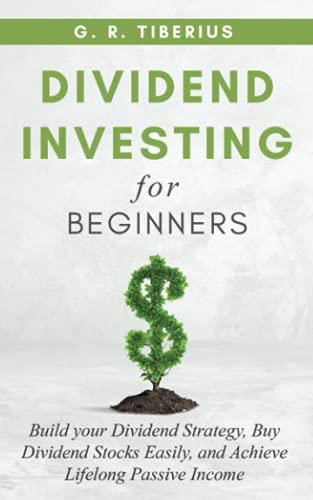
1) A manufacturer must decide whether to extend credit to a retailer who would like to open an account with the firm. Past experience with new accounts indicates that 55% are high-risk customers, 30% are moderate-risk customers, and 15% are low-risk customers. If credit is extended, the manufacturer can expect to lose S40,000 with a high-risk customer, make S60,000 with a moderate-risk customer, and make $90,000 with a low- risk customer. If the manufacturer decides not to extend credit to a customer, the manufacturer neither makes nor loses any money. Prior to making a credit extension decision, the manufacturer can obtain a credit rating report on the retailer at a cost of S2000. The credit agency concedes that its rating procedure is not completely reliable. In particular, the credit rating procedure will rate a low-risk customer as a moderate-risk customer with probability 0.12 and as a high-risk customer with probability 0.05 Furthermore, the given rating procedure will rate a moderate-risk customer as a low-risk customer with probablity 0.06 and as a high-risk customer with probability 0.08. Finally, the rating procedure will rate a high-risk customer as a low-risk customer with probability 0.02 and as a moderate-risk customer with probability 0.07. a. Find the strategy that maximizes the manufacturer's expected net earnings b. Should the manufacturer routinely obtain credit rating reports on those relations who seek credit approval? Why or why not? c. Compute and interpret EVII for this decision problem 1) A manufacturer must decide whether to extend credit to a retailer who would like to open an account with the firm. Past experience with new accounts indicates that 55% are high-risk customers, 30% are moderate-risk customers, and 15% are low-risk customers. If credit is extended, the manufacturer can expect to lose S40,000 with a high-risk customer, make S60,000 with a moderate-risk customer, and make $90,000 with a low- risk customer. If the manufacturer decides not to extend credit to a customer, the manufacturer neither makes nor loses any money. Prior to making a credit extension decision, the manufacturer can obtain a credit rating report on the retailer at a cost of S2000. The credit agency concedes that its rating procedure is not completely reliable. In particular, the credit rating procedure will rate a low-risk customer as a moderate-risk customer with probability 0.12 and as a high-risk customer with probability 0.05 Furthermore, the given rating procedure will rate a moderate-risk customer as a low-risk customer with probablity 0.06 and as a high-risk customer with probability 0.08. Finally, the rating procedure will rate a high-risk customer as a low-risk customer with probability 0.02 and as a moderate-risk customer with probability 0.07. a. Find the strategy that maximizes the manufacturer's expected net earnings b. Should the manufacturer routinely obtain credit rating reports on those relations who seek credit approval? Why or why not? c. Compute and interpret EVII for this decision







